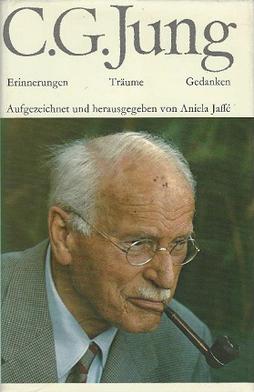Jungian psychology
Jung developed his own distinctive approach to the study of the human mind. In his early years when working in a Swiss hospital with schizophrenic patients and working with Sigmund Freud and the burgeoning psychoanalytic community, he took a closer look at the mysterious depths of the human unconscious. Fascinated by what he saw (and spurred on with even more passion by the experiences and questions of his personal life) he devoted his life to the exploration of the unconscious. Unlike many before him, Jung did not feel that experimenting using natural science was the best means to understand the soul. For him, an empirical investigation of the world of dream, myth, and soul represented the most promising road to deeper understanding. The overarching goal of Jung's work was the reconciliation of the life of the individual with the world of the supra-personal archetypes. He came to see the individual's encounter with the unconscious as central to this process. The human experiences the unconscious through symbols encountered in all aspects of life: in dreams, art, religion, and the symbolic dramas we enact in our relationships and life pursuits. Essential to the encounter with the unconscious, and the reconciliation of the individual's consciousness with this broader world, is learning this symbolic language. Only through attention and openness to this world are individuals able to harmonize their lives with these suprapersonal archetypal forces."Neurosis" results from a disharmony between the individual's consciousness and the greater archetypal world. The aim of psychotherapy is to assist the individual in reestablishing a healthy relationship to the unconscious (neither being overwhelmed by it — a state characteristic of psychosis — nor completely shut off from it — a state that results in malaise, empty consumerism, narcissism, and a life cut off from deeper meaning). The encounter between consciousness and the symbols arising from the unconscious enriches life and promotes psychological development. Jung asserted that neuroses and other psychological problems were not merely difficulties to be overcome or repressed, but that they represented opportunities for growth and maturation, whereby parts of the unconscious could be integrated into our psyche. He considered this process of psychological growth and maturation (which he called the process of individuation) to be of critical importance to the human being, and ultimately to modern society.
To undergo the individuation process, the individual must be open to the parts of oneself beyond one's own ego. The modern individual must pay attention to dreams, explore the world of religion and spirituality, and question the assumptions of the operant societal worldview (rather than just blindly living life in accordance with dominant norms and assumptions).
People interested in Jungian analysis should be aware that standards for mental health delivery services vary widely across regions in the English speaking world. Not all "Jungian analysts" are certified to practice as psychologists or psychotherapists. Potential clients or analysands should inquire carefully about analysts' qualifications. Further, services delivered as "Jungian" may vary across practitioners. Before committing to what may be a very long term and very expensive process, potential analysands should consult the literature on Jungian psychology from a consumer's perspective. In addition, this approach to psychology is not monolithic. Individual interpretations vary widely. Practitioners may vary considerably in the extent to which they agree with fundamental Jungian constructs as the "collective unconscious," "shadow," and "anima/animus." The degree to which a practitioner can disagree with these constructs and be an effective Jungian or Jungist analysis remains an open question.
The collective unconscious
Jung's concept of the collective unconscious has often been misunderstood. In order to understand this concept, it is essential to understand his idea of the archetype, something foreign to the highly empirical, scientifically-oriented Western mind.The collective unconscious could be thought of as the DNA of the human psyche[citation needed]. Just as all humans share a common physical heritage and predisposition towards specific physical forms (like having two legs, a heart, etc.) so do all humans have a common psychological predisposition. However, unlike the quantifiable information that composes DNA (in the form of coded sequences of nucleotides), the collective unconscious is composed of archetypes.
In contrast to the objective material world, the subjective realm of archetypes cannot be fully plumbed through quantitative modes of research. Instead it can be revealed more fully through an examination of the symbolic communications of the human psyche — in art, dreams, religion, myth, and the themes of human relational/behavioral patterns. Devoting his life to the task of exploring and understanding the collective unconscious, Jung theorized that certain symbolic themes exist across all cultures, all epochs, and in every individual.
The Shadow
The shadow is an unconscious complex that is defined as the repressed and suppressed aspects of the conscious self.There are constructive and destructive types of shadow.
On the destructive side, it often represents everything that the conscious person does not wish to acknowledge within themselves. For instance, someone who identifies as being kind has a shadow that is harsh or unkind. Conversely, an individual who is brutal has a kind shadow. The shadow of persons who are convinced that they are ugly appears to be beautiful.
On the constructive side, the shadow may represent hidden positive influences. This has been referred to as "the gold in the shadow." Jung points to the story of Moses and Al-Khidr in the 18th Book of the Koran as an example.
Jung emphasized the importance of being aware of shadow material and incorporating it into conscious awareness, lest one project these attributes on others.
The shadow in dreams is often represented by dark figures of the same gender as the dreamer.
According to Jung the human being deals with the reality of the Shadow in four ways: denial, projection, integration and/or transmutation.
Anima and Animus
Jung identified the anima as being the unconscious feminine component of men and the animus as the unconscious masculine component in women. However, this is rarely taken as a literal definition: many modern day Jungian practitioners believe that every person has both an anima and an animus. Jung stated that the anima and animus act as guides to the unconscious unified Self, and that forming an awareness and a connection with the anima or animus is one of the most difficult and rewarding steps in psychological growth. Jung reported that he identified his anima as she spoke to him, as an inner voice, unexpectedly one day.Often, when people ignore the anima or animus complexes, the anima or animus vies for attention by projecting itself on others. This explains, according to Jung, why we are sometimes immediately attracted to certain strangers: we see our anima or animus in them. Love at first sight is an example of anima and animus projection. Moreover, people who strongly identify with their gender role (e.g. a man who acts aggressively and never cries) have not actively recognized or engaged their anima or animus.
Jung attributes human rational thought to be the male nature, while the irrational aspect is considered to be natural female. Consequently, irrationality is the male anima shadow and rationality is the female animus shadow.
Psychological Types
The often misunderstood terms extravert and introvert derive from this work. In Jung's original usage, the extraversion "is an outward-turning of libido", whereas introversion is an inward-turning of libido. Everyone has both the intraversion and the extraversion mechanisms, and the collectively dominant type determines whether an individual is introvert or extrovert.According to Jung, the conscious psyche is an apparatus for adaptation and orientation, and consists of a number of different psychic functions. Among these he distinguishes four basic functions:
* sensing - perception by means of the sense organs;
* intuition - perceiving in unconscious way or perception of unconscious contents.
* thinking - function of intellectual cognition; the forming of logical conclusions;
* feeling - function of subjective estimation;
Thinking and feeling functions are rational, while sensing and intuition are nonrational. According to Jung, rationality consists of figurative thoughts, feelings or actions with reason—a point of view based on objective value, which is set by practical experience. Nonrationality is not based in reason. Jung notes that elementary facts are also nonrational, not because they are illogical but because, as thoughts, they are not judgments.
In any person, the degree of introversion/extraversion of one function can be quite different from that of another function.
Generally, we tend to favor our most developed, superior function, while we can broaden our personality by developing the others. Related to this, Jung noted that the unconscious often tends to reveal itself most easily through a person's least developed, inferior function. The encounter with the unconscious and development of the underdeveloped function(s) thus tend to progress together.






0 comments:
Post a Comment